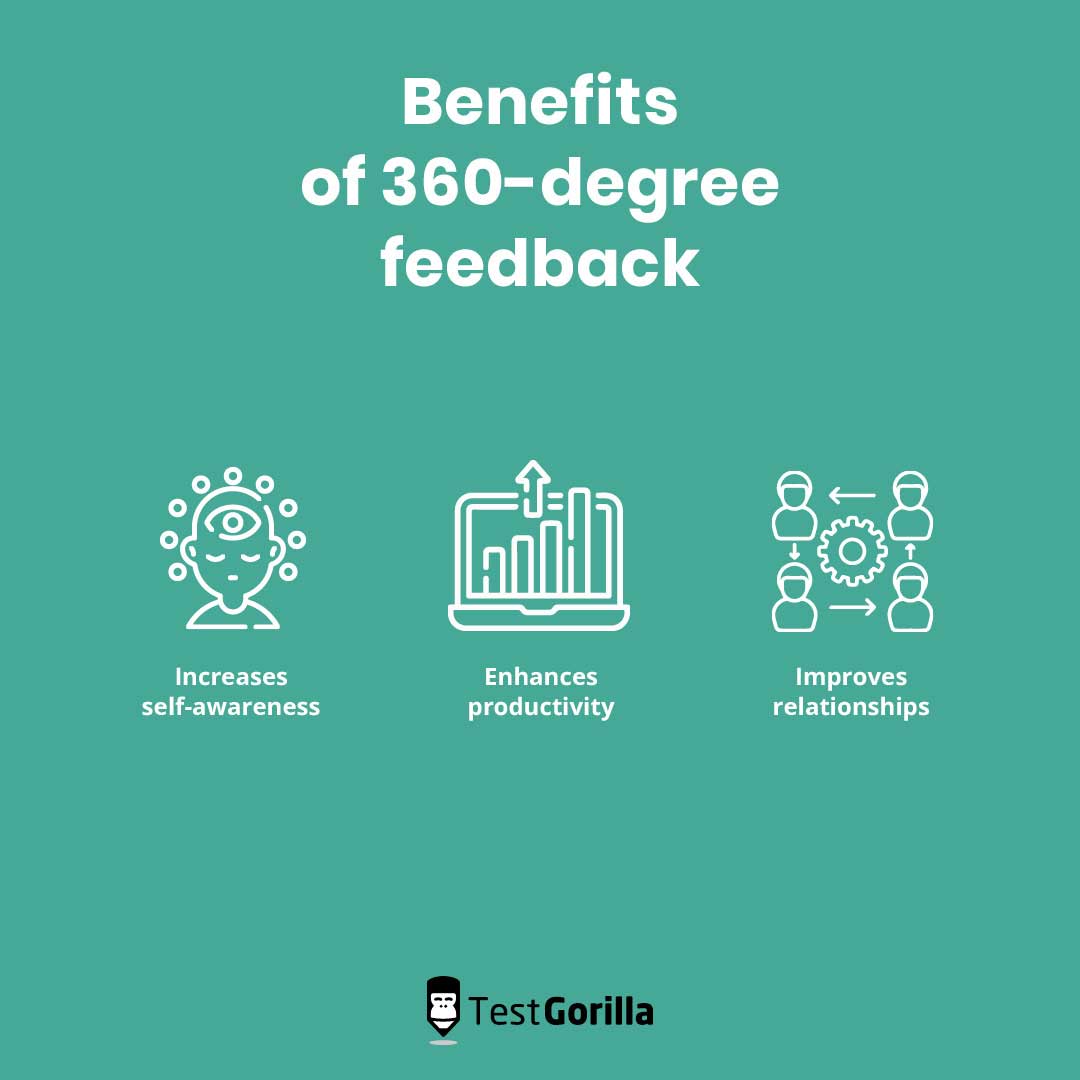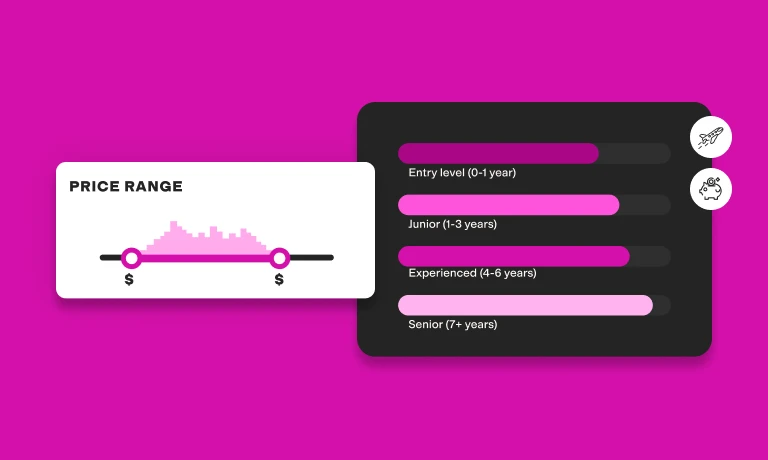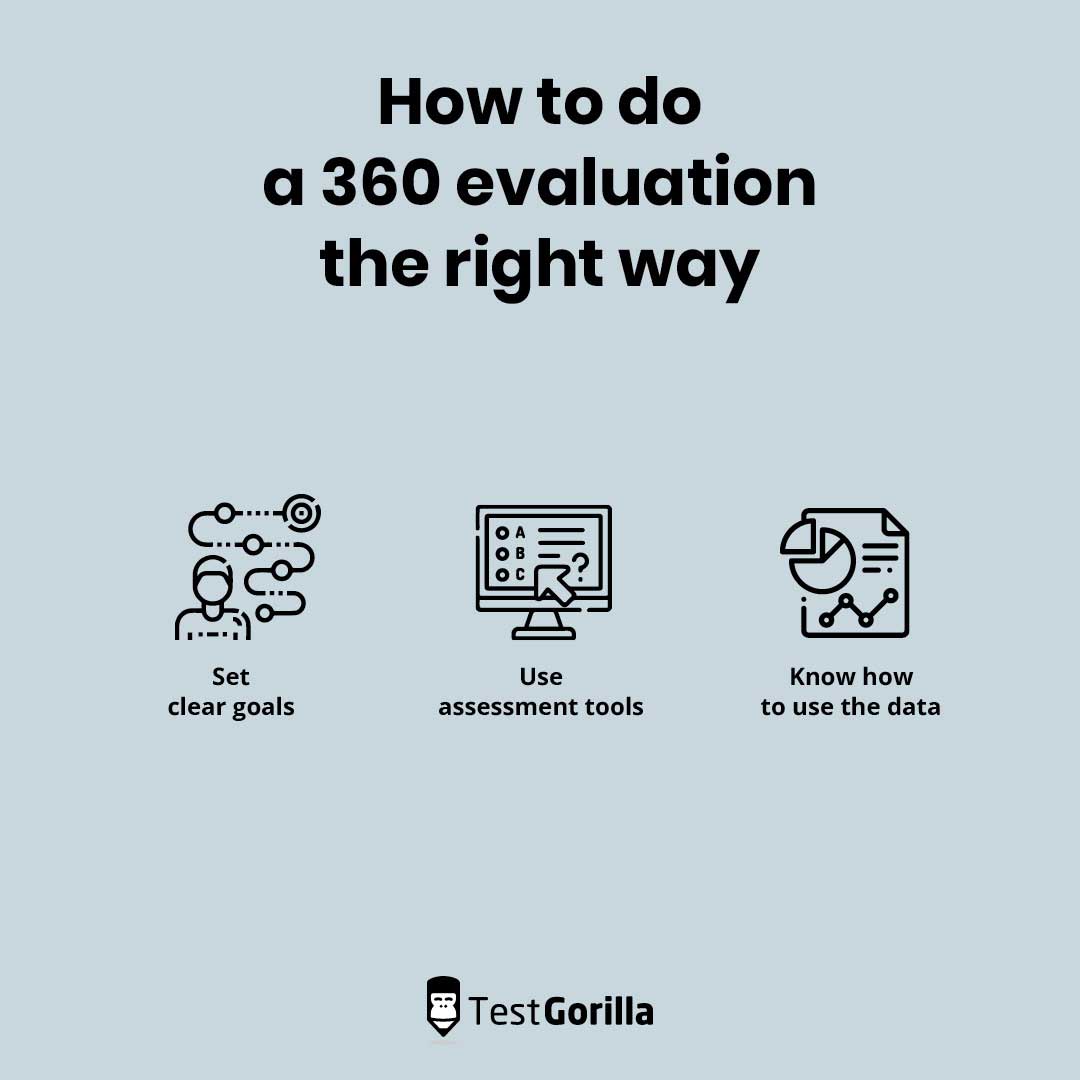360 evaluation in the workplace: how to do it the right way
Did you know that 360 evaluation is a performance-measurement tool that can benefit your company and its employees? You should use 360 evaluation in the modern workplace to help foster your employees’ learning and development and provide them with an accurate assessment of their strengths and weaknesses.
But giving 360 feedback properly is easier said than done. It has multiple elements that you need to implement correctly if you want 360 evaluation to succeed. In this article, we’ll go over the various ways you can use 360 feedback and how to do so correctly.
Before we get into that, we’ll start by defining what a 360 evaluation is.
What is a 360 evaluation?
A 360 evaluation, or 360-degree feedback, is a multi-source feedback method. In this type of evaluation, an employee’s peers, colleagues, and managers assess the employee’s skills to get a comprehensive view of all of their strengths and weaknesses.
The method usually involves around 10 people and is a great source of information for the manager and the employee. They will have an opportunity to see how the people who work with them perceive their actions and inactions and gain insights that are directly relevant to them.
Benefits of 360-degree feedback
There are multiple benefits to using 360-degree feedback in the workplace:
1. Increases self-awareness
The results of 360 feedback can show employees the difference between the image they have of themselves and how others in the workplace view them. This works wonders in helping employees improve their self-awareness, which is crucial given that studies have found that only 10% to 15% of people are self-aware.
2. Enhances productivity
Providing 360-degree feedback helps raise employees’ productivity. A 360 evaluation will help them understand how to modify their behaviors and approaches at work to become more efficient and productive.
3. Improves relationships
Many team members struggle to give feedback to each other. Colleagues often think that it isn’t their place to provide feedback to other employees and that it’s instead the manager’s responsibility. However, according to a survey by Harvard Business Review, even 44% of managers found giving negative feedback to be stressful or difficult.
If given incorrectly, feedback can lead to resentment and problems in the workplace. But 360-degree feedback solves that problem by providing a structured way to give clear, relevant, and constructive information to employees. It can even improve the relationships within your team so that it operates even better.
The best insights on HR and recruitment, delivered to your inbox.
Biweekly updates. No spam. Unsubscribe any time.
Two ways to use 360-degree feedback
You can use 360-degree feedback for many different purposes, but there are two main uses that provide the biggest return on investment:
1. Performance-measurement tool
You can use 360-degree feedback to assess, evaluate, and analyze your employees’ performance. Other team members can contribute to the process with their valuable information, and you, as a manager, will have all the information you need to manage your employees’ performance.
You can examine and analyze their behavior over the past months to understand not only how productive they were but also how well they worked with others in the team. However, performance measurement isn’t the only thing you can use 360-degree feedback for.
2. Developmental tool
It’s critical to use 360-degree feedback as a tool for learning and development. It provides you with essential information about how your employee operates in the workplace, including their relationships with their team members and how they structure and perform their work.
The performance-measurement side of 360 evaluation is a reactive tool for assessing an employee’s performance, whereas the developmental side of the 360 evaluation is a proactive tool that focuses on helping the employee grow.
Once you’ve gathered information using 360 evaluation, you can look at the employee’s problems, challenges, and weaknesses and figure out how they can develop in these areas. You can do this by having a one-on-one session with the employee and co-creating a development plan for their personal and professional goals.
Co-creating a development plan ensures the employee knows what they need to do and keeps them accountable for meeting their objectives. Likewise, you are also accountable to the employee since you are responsible for tracking and measuring their progress.
How to do a 360 evaluation the right way
There are three elements that you need to master to implement the 360 evaluation the right way:
1. Set clear goals
The first thing you should do when conducting a 360 evaluation is to set clear goals. Before you give feedback, you must be able to clearly answer the following questions:
What will you measure with 360-degree feedback?
How will you measure it?
What will be the output of the feedback?
To make the most of 360 feedback, you need to know what you want to get out of it before you start providing it to employees.
2. Use assessment tools
The second element of conducting a 360 evaluation correctly is using the right assessment tools. Once you set the right goals for your 360-degree feedback, you’ll need to find assessment tools that will help you evaluate the employee.
You must select the right tools to ensure that the feedback is as objective as possible and that neither you nor any of the employee’s peers fall prey to unconscious bias.
3. Know how to use the data
Finally, you need to understand how to properly use the data that you receive. If you’re not planning on using the data that you receive from the 360 evaluation in any meaningful way, it’s better not to do the evaluation at all.
The employee’s colleagues may offer authentic and useful feedback the first time you ask for it, but if you don’t use their feedback, they may not put as much thought into their responses the next time. Therefore, you must have a plan in place for how you will implement all the information you receive from the 360-degree evaluation.
Use 360 evaluation in the workplace to help your employees grow
Your workplace can greatly benefit from 360-degree feedback if you follow the steps above. On top of 360-degree evaluations, you can also give your employees skills assessments to assess their current knowledge, experience, and expertise.
You can find a list of more than 260 scientifically created tests, such as our HR Fundamentals test, in our test library.
See how you can use TestGorilla to evaluate your employees – sign up for a free demo today.
You've scrolled this far
Why not try TestGorilla for free, and see what happens when you put skills first.




















